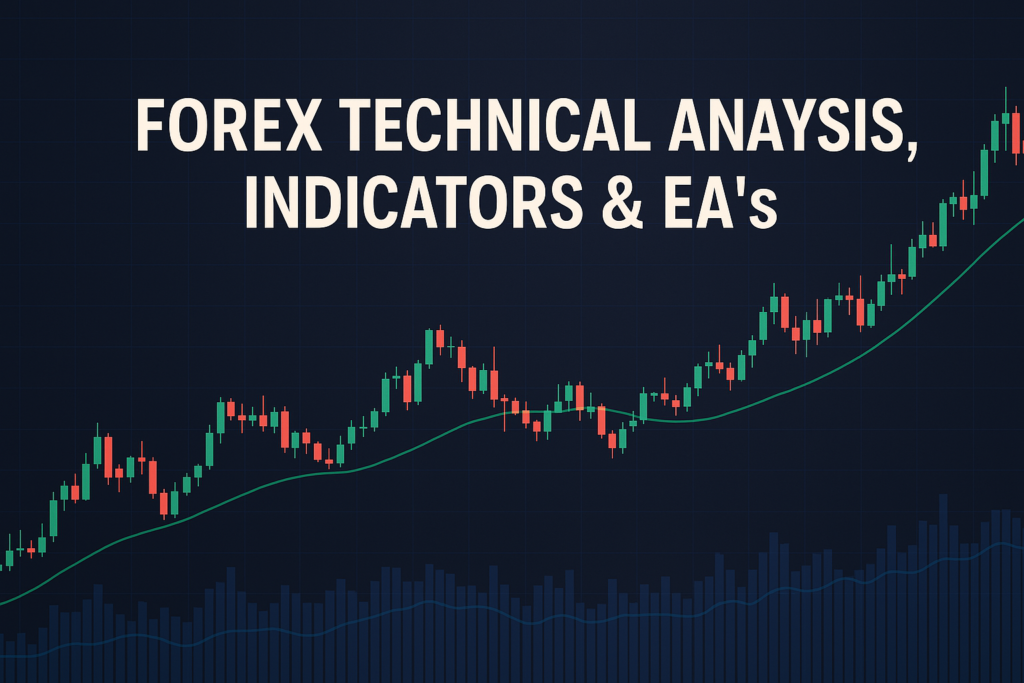
Learn about ADX smoothing, its importance in Forex trading, and effective strategies to enhance your trading skills.
In the world of Forex trading, understanding various tools and indicators is essential for success. One such tool is ADX smoothing, which helps traders identify trends and make informed decisions. It’s like a compass guiding a sailor through stormy seas, providing clarity in a chaotic market.
However, many traders, whether beginners or seasoned professionals, often find it challenging to grasp the concept of ADX smoothing. They struggle with its application and may even shy away from using it due to the complexity it seems to carry. This is where our guide comes in. By understanding and applying ADX smoothing effectively, traders can unlock its potential and enhance their trading strategies.
In this article, we will explore what ADX smoothing is, its history, advantages and disadvantages, and how to apply it on popular trading platforms. Additionally, we’ll share several trading strategies that utilize ADX smoothing, both on its own and in combination with other indicators.
If you’re looking to elevate your trading skills, consider checking out our comprehensive forex tutorial for essential steps to successful trading.
What is ADX Smoothing?
Understanding ADX Smoothing
ADX smoothing is a method used to analyze price movements in Forex trading. It helps traders determine the strength of a trend. Imagine you’re riding a bicycle. If the path is smooth, you can pedal faster and enjoy the ride. But if the road is bumpy, it becomes harder to maintain your speed. Similarly, ADX smoothing helps reduce the “bumps” in price data, allowing traders to see trends more clearly.
Types of ADX Smoothing
There are different types of ADX smoothing methods available. Here are a few:
- Simple Moving Average (SMA): This method averages prices over a specific period, making it easy to see trends.
- Exponential Moving Average (EMA): This gives more weight to recent prices, helping traders react more quickly to changes.
- Weighted Moving Average (WMA): This method assigns different weights to prices, giving more importance to certain periods.
How Does ADX Smoothing Work?
When we talk about smoothing out price action, we mean reducing the noise in the market. Just like filtering out background noise when listening to music, ADX smoothing filters out the daily fluctuations in price, allowing traders to focus on the overall trend. This is crucial for making sound trading decisions.
Common Periods Used and Why
Traders often use specific periods for ADX smoothing, like 14 days or 21 days. Choosing the right period is vital. A shorter period reacts quickly to price changes, while a longer period is more stable but may lag behind. It’s about finding the right balance for your trading style.
The History of ADX Smoothing
Origin of ADX Smoothing
ADX smoothing was developed by J. Welles Wilder Jr. in the late 1970s. He created it to help traders understand market trends better. His aim was to provide a clearer picture of price movements, which has become invaluable to traders around the world.
When Did Traders Start Using It Widely?
Traders began to adopt ADX smoothing widely in the 1980s and 1990s. As Forex trading gained popularity, the need for effective trend analysis tools became evident. ADX smoothing quickly became a favorite among many traders looking to gain an edge in the market.
Real-Life Stories
Many professional traders have credited ADX smoothing with helping them make significant profits. For example, one trader used ADX smoothing to identify a strong upward trend in the Euro. By entering the market early, they managed to ride the trend and secure substantial gains. Stories like these highlight the potential of ADX smoothing in achieving trading success.
Advantages and Disadvantages of ADX Smoothing
Advantages
Let’s explore some advantages of using ADX smoothing:
- Helps Identify Trends Easily: ADX smoothing allows traders to spot trends quickly, making it easier to make decisions.
- Useful for Dynamic Support and Resistance: It helps traders determine key support and resistance levels, enhancing their trading strategy.
- Works Well for Crossover Strategies: Many traders use ADX smoothing in conjunction with other indicators for crossover strategies, which can lead to profitable trades.
Disadvantages
While ADX smoothing has its benefits, it also has some downsides:
- Lags Behind Price Movements: ADX smoothing can lag, meaning it may not react quickly enough to sudden price changes.
- Can Give False Signals in Sideways Markets: In a sideways market, ADX smoothing might generate misleading signals, leading to potential losses.
How to Apply ADX Smoothing on MT4 & MT5
Step-by-Step Guide to Adding ADX Smoothing on Charts
To begin using ADX smoothing on your charts, follow these simple steps:
- Open your MT4 or MT5 platform.
- Select the “Insert” menu and click on “Indicators.”
- Choose “Trend” and then select “Average Directional Index.”
- Adjust the settings based on your trading preferences.
Customizing ADX Smoothing Settings
Once you’ve added ADX smoothing to your charts, you might want to customize the settings. This includes adjusting periods, colors, and types of smoothing to suit your trading style. Experiment until you find what works best for you.
Saving Templates for Easy Application
After customizing your ADX smoothing settings, save the template for future use. This way, you can quickly apply your preferred settings to new charts without having to redo everything each time.
5 to 7 Trading Strategies Using Only ADX Smoothing
1. All Time Frame Strategy (M5 to D1)
This strategy works across various time frames. The idea is to look for the trend indicated by ADX smoothing. When ADX is above 25, it’s a strong trend, which signals a buy or sell opportunity.
2. Trending Strategies
Use ADX smoothing to follow the trend. If ADX is rising and above 20, you can enter a buy position. Conversely, if it’s decreasing and below 20, consider a sell position.
3. Counter Trade Strategies
In this approach, traders look for signs of a trend reversal. If ADX is high and starts to drop, it might signal a reversal. This is your cue to consider selling.
4. Swing Trades Strategies
For swing trading, wait for ADX to indicate a strong trend and then enter trades accordingly. Look for price pullbacks in the direction of the trend to maximize gains.
5. Combining ADX Smoothing with Other Indicators
This strategy involves using ADX smoothing alongside other indicators like moving averages or oscillators. For instance, when ADX confirms a trend and a moving average crossover occurs, traders can enter the market with confidence.
5 to 7 Trading Strategies Combining ADX Smoothing with Other Indicators
1. All Time Frame Strategy (M5 to D1)
Similar to the previous section, but this time we incorporate another indicator. When ADX is strong and a moving average crossover occurs, it’s a signal to buy.
2. Trend Confirmation Strategy
Use ADX alongside the RSI indicator. When both indicate a strong trend, it’s a good opportunity to enter a trade.
3. Divergence Strategy
Look for divergence between ADX and price action. If ADX is making higher highs while price is making lower highs, it could indicate a trend reversal.
4. Oscillators Strategy
Using ADX smoothing with oscillators like Stochastic can provide further confirmation. For example, when ADX is rising and Stochastic indicates oversold conditions, it’s a signal to buy.
5. Breakout Strategies
Combine ADX with Bollinger Bands. When price breaks the upper band and ADX is rising, it suggests a potential upward trend, signaling a buy.
Speaking of indicators, you might want to explore oscillators, which can further enhance your trading strategies.
Top 10 FAQs About ADX Smoothing
1. What is ADX Smoothing?
ADX smoothing is a method used to analyze price movements and identify trends in Forex trading.
2. How do you calculate ADX?
ADX is calculated based on the difference between the +DI and -DI indicators. A higher ADX value indicates a stronger trend.
3. When should I use ADX Smoothing?
Use ADX smoothing when you want to identify the strength of a trend, especially in volatile markets.
4. Can ADX Smoothing be used in sideways markets?
While it can be used, ADX smoothing may provide false signals in sideways markets.
5. What is the best period for ADX smoothing?
Common periods include 14 or 21 days, but it’s essential to find what works best for your trading strategy.
6. How does ADX smoothing help in trading?
It helps traders identify trends and make informed decisions, enhancing their trading strategies.
7. Can beginners use ADX smoothing?
Yes, beginners can use it. However, understanding its application is key to maximizing its benefits.
8. Is ADX smoothing reliable?
While it’s a reliable tool, it should be used in conjunction with other indicators for improved accuracy.
9. What are common mistakes when using ADX smoothing?
Common mistakes include relying solely on ADX without considering other factors, like market conditions.
10. How can I improve my ADX smoothing skills?
Practice using ADX smoothing in a demo account and combine it with other indicators to gain confidence.
Conclusion
In summary, ADX smoothing is a powerful tool that can help traders identify trends and make better decisions. Understanding its advantages and disadvantages is crucial for effective use. Remember to test different strategies before committing real money to ensure you find what works best for you.
Don’t hesitate to explore and experiment with ADX smoothing. It may just be the key to unlocking your Forex trading potential!
With careful application and strategy testing, you can leverage ADX smoothing to your advantage. Happy trading!
This post complements what we’ve discussed here—check it out for more insights CNBC, Benzinga
Expand Your Knowledge
- 📌 Forex Trading Learning Road Map
- 📌 Forex Trading Course with no Fees
- 📌 Forex Trading Issues, Problems, and Solutions
- 📌 Forex Daily Forecast & Live Updates
- 📌 Forex Fundamental & News Analysis: Tomorrow’s Market Movers & Trade Opportunities
- 📌 Forex Education Hub: Learn & Profit
- 📌 Forex Technical Analysis, Indicators & EA’s
Start Trading Today
Ready to take your forex trading to the next level? Open an account with Exness, one of the most trusted platforms in the industry. 👉 Sign Up Now and trade with confidence!
My recommended broker stands out with ultra-low spreads for beginners, instant withdrawals, and zero spread accounts for pro traders.
Trusted since 2008, lightning-fast execution, no hidden fees, and a secure, transparent trading environment—giving you the edge you need to succeed. 🚀
Watch this helpful video to better understand adx smoothing:
Note: The video above is embedded from YouTube and is the property of its original creator. We do not own or take responsibility for the content or opinions expressed in the video.
In the latest Quantifica video, the host delves into the Directional Movement Index (DMI), a powerful tool for identifying trends in the Forex market and making informed trading decisions. The DMI consists of three lines, with the blue line representing the strength of upward trends (positive directional index) and the orange line indicating downward trends (negative directional index). When the blue line is above the orange line, it signals a bullish trend, while the opposite indicates a bearish trend. The distance between these lines signifies the strength of the market trend; tightly spaced lines suggest weak trends, whereas wider spacing indicates a strong directional movement. To enhance this analysis, the video introduces the Average Directional Index (ADX) line, which reflects the gap between the blue and orange lines. By setting a threshold, traders can determine whether the market is trending, with an ADX value above 20 being a key indicator to look for trades in the direction of the trend.
The video also presents an improved version of the DMI indicator called the Quantifica DMI, which simplifies the analysis by eliminating clutter and adding useful features. This enhanced tool allows traders to easily identify when a trend is gaining strength or nearing exhaustion. The ADX line changes color based on the position of the DI lines, providing immediate visual feedback about market conditions. Furthermore, by setting a threshold for trend exhaustion, traders can receive warnings when trends may be about to reverse. This is crucial because trends do not last indefinitely; recognizing signs of a potential reversal can help traders avoid losing trades. The Quantifica DMI is offered for free, with a link provided in the video description. For those looking to deepen their understanding of Forex trading, additional resources such as a forex learning pdf can be invaluable in mastering the complexities of the market.
For traders seeking to enhance their skills, the importance of educational resources cannot be overstated. A comprehensive forex learning pdf can provide insights and strategies that are critical to successful trading. By supplementing practical experience with theoretical knowledge, traders can develop a more nuanced understanding of market dynamics and improve their decision-making process. This combination of hands-on trading and foundational education is essential for anyone serious about succeeding in Forex trading.




